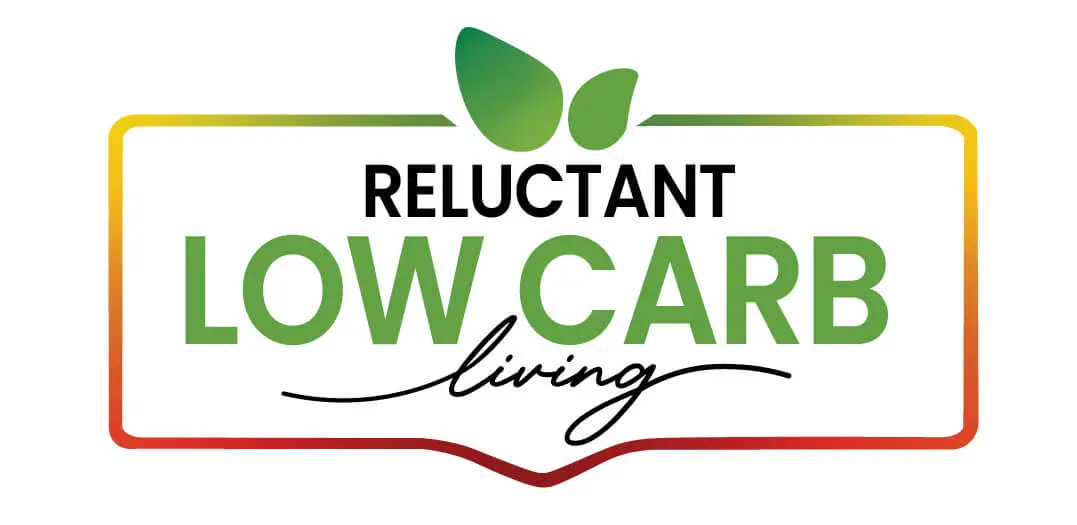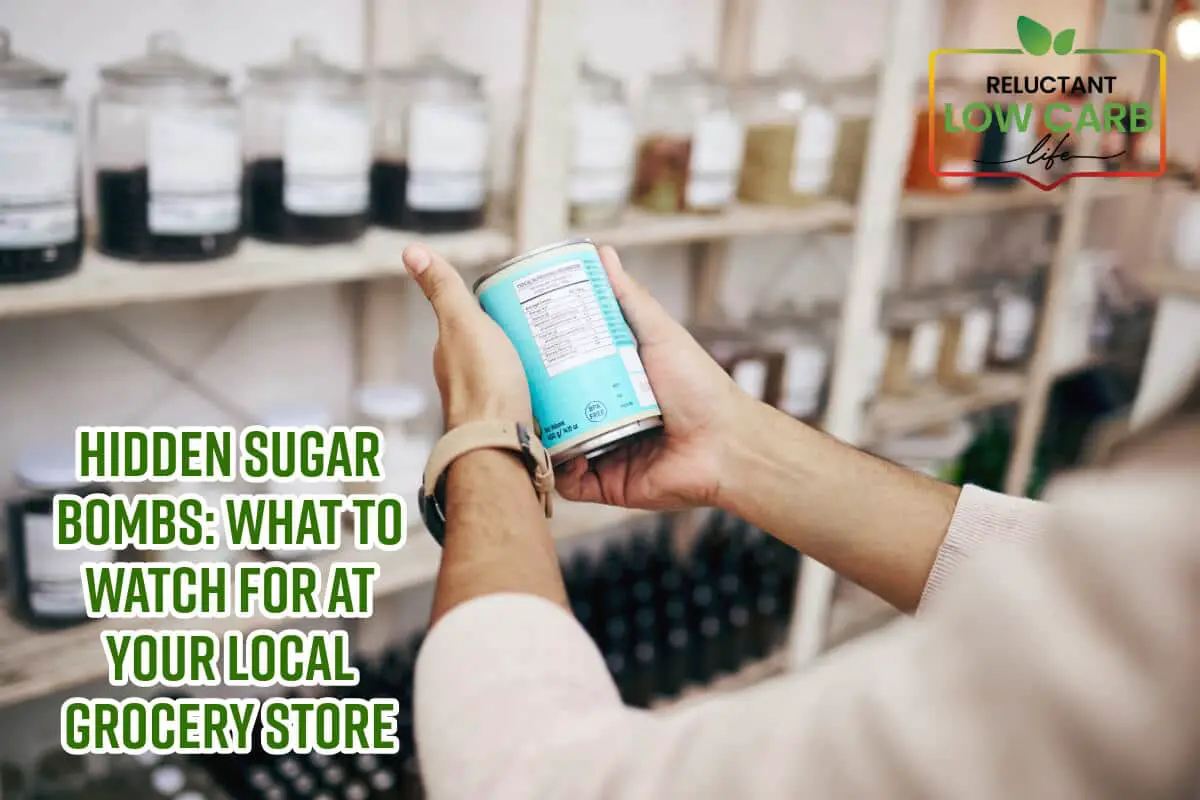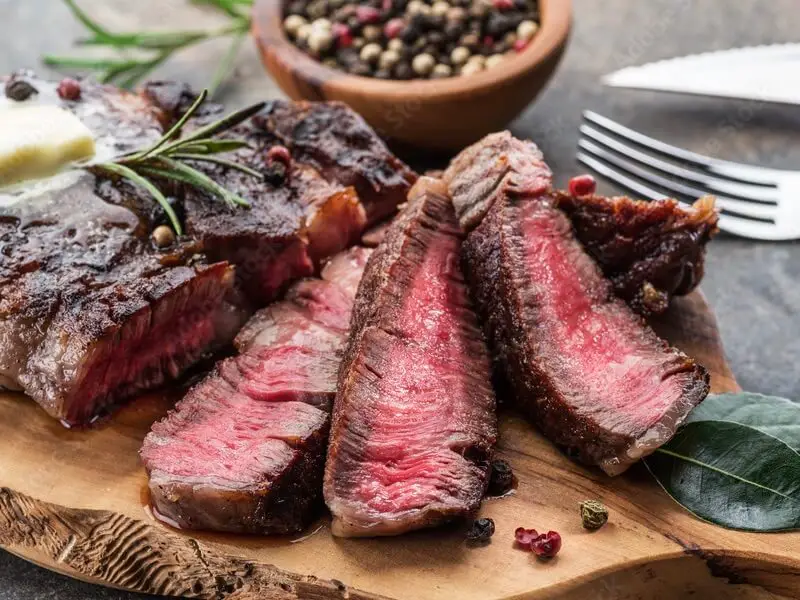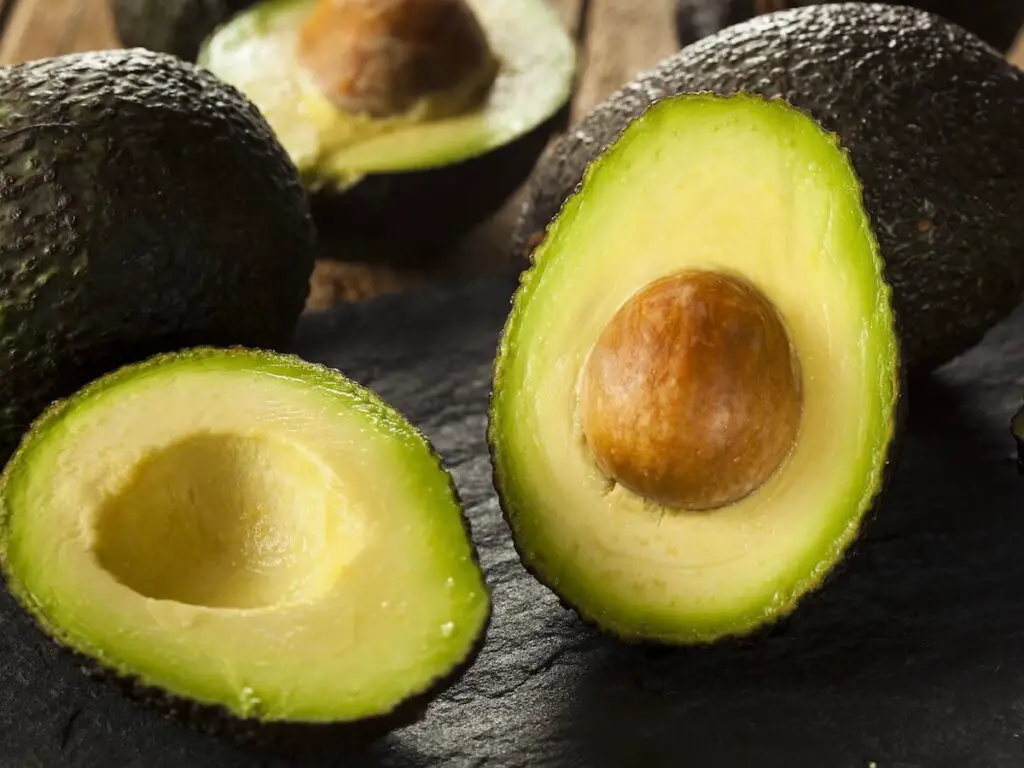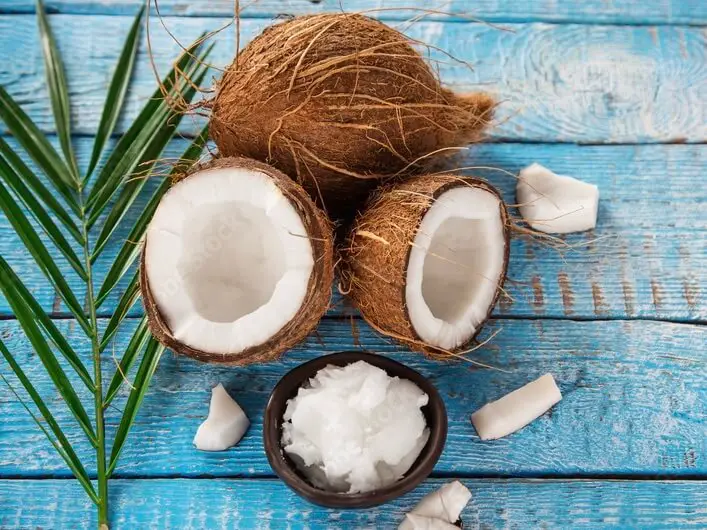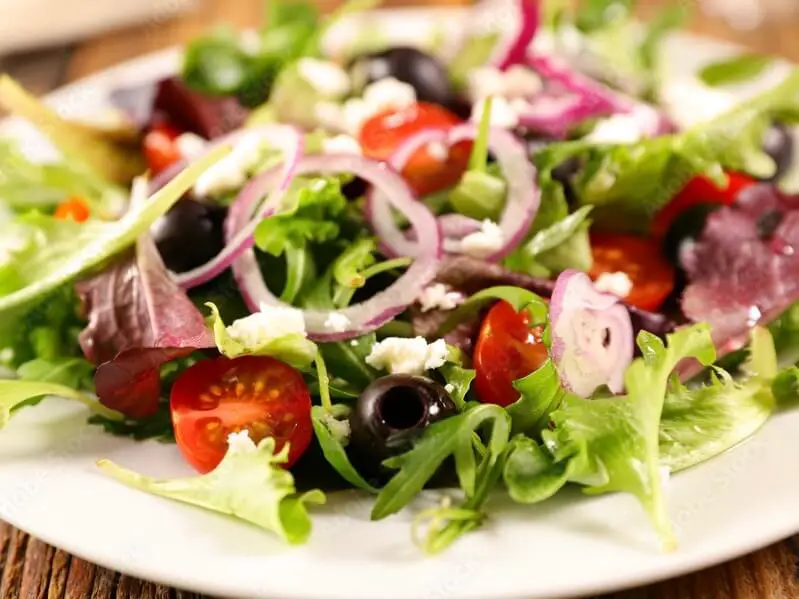Living a low-carb lifestyle can feel like navigating a minefield, especially at the grocery store. From the moment you step through the doors, you’re bombarded with brightly colored packages and health claims that promise you the world. “Low-fat!” “All-natural!” “Heart-healthy!” But lurking behind these enticing labels is often a hidden culprit: sugar.
Hidden sugars and carb traps are everywhere, even in foods that seem like healthy choices. If you’re not careful, you might find yourself consuming far more sugar and carbs than you intended, derailing your health goals. In this post, we’ll uncover 15-20 everyday grocery store items that are sugar bombs in disguise, explain why they’re problematic, and offer tips for shopping smart and reading labels effectively.
Table of Contents
- Why Hidden Sugars Are So Sneaky
- The Health Impact of Hidden Sugars
-
Hidden Sugar Bombs to Watch For
- 1. Flavored Yogurt
- 2. Granola
- 3. Protein Bars
- 4. Smoothies and Juices
- 5. Salad Dressings
- 6. Ketchup
- 7. Breakfast Cereals
- 8. Energy Drinks
- 9. Nut Butters
- 10. Dried Fruit
- 11. Trail Mix
- 12. Instant Oatmeal
- 13. Canned Soups
- 14. Sports Drinks
- 15. Plant-Based Milks
- 16. Gluten-Free Products
- 17. Barbecue Sauce
- 18. Frozen Meals
- 19. Fruit-Flavored Water
- 20. Cereal Bars
-
Hidden Sugar Bombs to Watch For
- How to Shop Smart and Avoid Sugar Bombs
- Related Question
Why Hidden Sugars Are So Sneaky
Hidden sugars are added sugars that aren’t immediately obvious because they appear under different names or are tucked into foods you wouldn’t expect. Food manufacturers are experts at marketing their products to seem healthy, and they know that most people don’t read the fine print on nutrition labels.
Alternate Names for Hidden Sugars
Sugar can be listed under dozens of names, such as:
- High-fructose corn syrup
- Cane juice
- Maltodextrin
- Agave nectar
- Dextrose
- Fructose
- Sucrose
- Honey
Many of these sound harmless or even healthy, but they all contribute to your daily sugar intake. Even foods marketed as “low-fat” or “natural” can be packed with sugar to make up for the flavor lost when fat is removed.
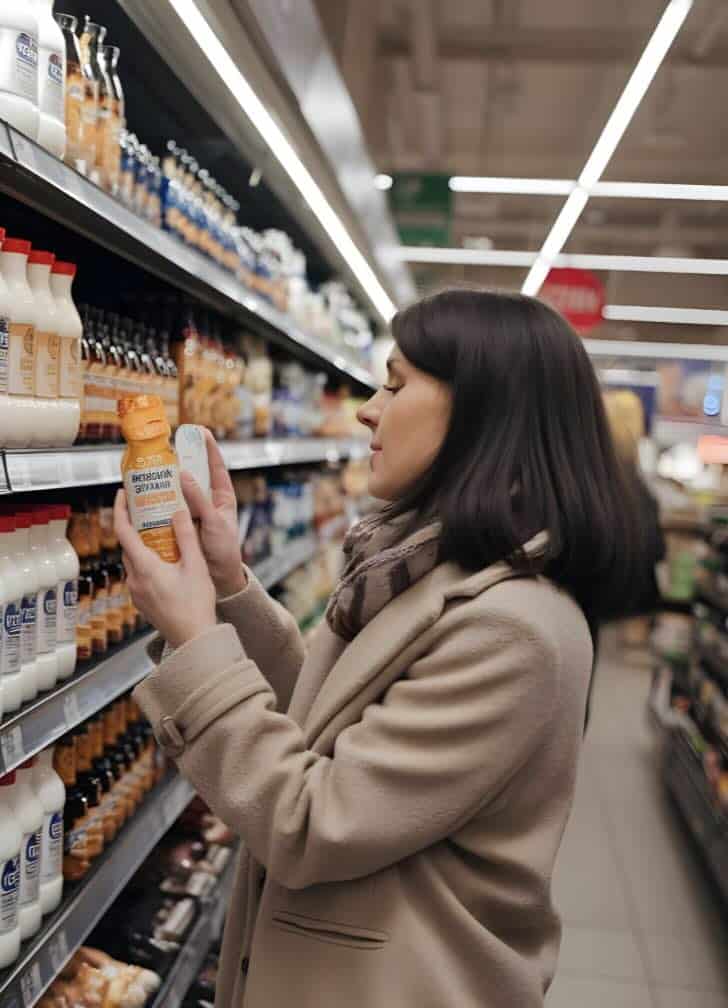
The Health Impact of Hidden Sugars
Consuming too much sugar can lead to a host of health issues, including weight gain, insulin resistance, type 2 diabetes, and inflammation. For those following a low-carb or keto lifestyle, hidden sugars can kick you out of ketosis and sabotage your progress. Learning to identify these sugar bombs is crucial for maintaining your health and achieving your goals.
Hidden Sugar Bombs to Watch For
Let’s dive into some of the most common grocery store items that are marketed as healthy but are loaded with sugar.
1. Flavored Yogurt
Yogurt is often marketed as a health food, but flavored varieties can contain as much sugar as a candy bar. A single serving of fruit-flavored yogurt can have 20-30 grams of sugar.
Opt for plain, full-fat yogurt and add your fresh berries or a sprinkle of stevia for sweetness.
2. Granola
Granola is often seen as a wholesome breakfast option, but most store-bought granolas are packed with sugar. Even “organic” or “natural” brands can contain 15-20 grams of sugar per serving. Instead, look for unsweetened granola or make your own at home.
3. Protein Bars
Protein bars are marketed as a convenient health snack, but many are essentially candy bars in disguise. Popular brands can contain 10-20 grams of sugar per bar.
Look for low-carb, high-protein options with minimal added sugar.
4. Smoothies and Juices
Pre-made smoothies and juices often claim to be “all-natural” or “packed with vitamins,” but they’re also loaded with sugar. A single bottle can contain 30-50 grams of sugar, even if it’s made from fruit.
Stick to water or make your low-sugar smoothies at home.
5. Salad Dressings
Bottled salad dressings, especially “light” or “fat-free” varieties, are notorious for hiding sugar. A two-tablespoon serving can have 5-10 grams of sugar.
Choose dressings with no added sugar or make your own using olive oil, vinegar, and herbs.
6. Ketchup
Ketchup is a staple condiment, but it’s also a sugar bomb. Just one tablespoon can contain 4 grams of sugar. Look for sugar-free ketchup or use alternatives like mustard or hot sauce.
7. Breakfast Cereals
Even cereals marketed as “heart-healthy” or “whole grain” can be loaded with sugar. A single serving can have 10-20 grams of sugar, and most people eat more than the recommended serving size.
Opt for unsweetened options or skip cereal altogether.
8. Energy Drinks
Energy drinks are marketed as a way to boost your performance, but they’re often packed with sugar. A single can can contain 30-50 grams of sugar.
Stick to black coffee ot tea for a caffeine fix – or better yet, stick to water.
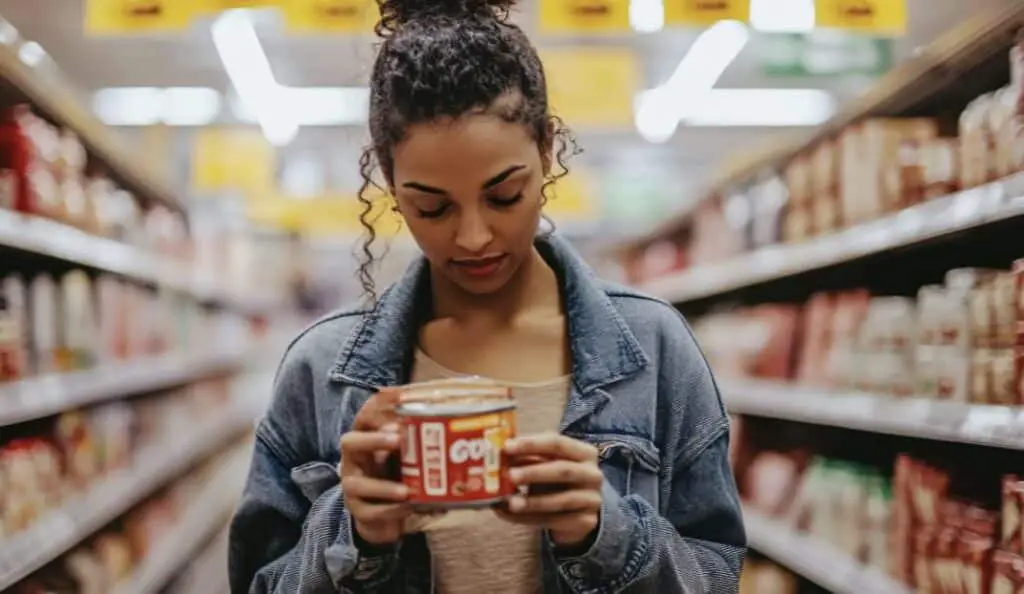
9. Nut Butters
Peanut butter and other nut butters can be a great source of healthy fats, but many brands add sugar to improve the taste. Check the label and choose nut butters with no added sugar.
10. Dried Fruit
Dried fruit might seem like a healthy snack, but it’s concentrated sugar. A small handful of dried mango or raisins can have 20-30 grams of sugar.
Stick to fresh fruit in moderation.
11. Trail Mix
Trail mix is often marketed as a healthy snack, but many varieties are loaded with sugary ingredients, such as chocolate chips, yogurt-covered raisins, and sweetened dried fruit. Make your mix with unsweetened nuts and seeds.
12. Instant Oatmeal
Flavored instant oatmeal packets are convenient, but they’re also full of sugar. A single serving can have 10-15 grams of sugar. Choose plain oatmeal and add your low-carb toppings.

13. Canned Soups
Canned soups may seem like a savory option, but many contain added sugar for flavor enhancement. Tomato-based soups are especially guilty, with some varieties containing 10-15 grams of sugar per serving. Look for low-carb, sugar-free options.
14. Sports Drinks
Sports drinks are often marketed as a way to replenish electrolytes, but they’re also packed with sugar. A single bottle can contain 20-30 grams of sugar. Opt for sugar-free electrolyte drinks or plain water.
15. Plant-Based Milks
Almond milk, oat milk, and other plant-based milks can be a great alternative to dairy, but flavored or sweetened varieties often contain added sugar. Choose unsweetened versions to keep your sugar intake in check.
16. Gluten-Free Products
Gluten-free doesn’t mean sugar-free. Many gluten-free breads, crackers, and snacks use sugar to improve flavor and texture. Always check the label for added sugars.
17. Barbecue Sauce
Barbecue sauce is a sneaky source of sugar, with some brands containing 10-15 grams of sugar per two-tablespoon serving. Look for sugar-free or low-carb alternatives.

18. Frozen Meals
Many frozen meals, even “healthy” ones, contain added sugar to enhance flavor. Check the nutrition label and ingredient list before buying.
19. Fruit-Flavored Water
Flavored waters might seem like a better choice than soda, but many contain added sugar or artificial sweeteners. Choose plain water or infuse your own with fresh fruit.
20. Cereal Bars
Cereal bars are often marketed as a quick, healthy breakfast option, but they’re usually loaded with sugar. Look for low-carb or keto-friendly bars instead.
How to Shop Smart and Avoid Sugar Bombs
Avoiding hidden sugars doesn’t mean you have to give up all your favorite foods. With a bit of knowledge and effort, you can make smarter choices at the grocery store. Here are some tips:
- Read the Nutrition Label: Look for “Total Sugars” and “Added Sugars” on the label. Aim for products with little to no added sugar.
- Check the Ingredients List: Familiarize yourself with the many names for sugar and scan the ingredients list for them.
- Be Wary of Health Claims: Phrases like “low-fat,” “natural,” or “organic” don’t necessarily mean low-sugar. Always verify by checking the label.
- Choose Whole Foods: Focus on whole, unprocessed foods like fresh vegetables, meats, and healthy fats. These are naturally low in sugar.
- Make Your Own: Whenever possible, make your versions of foods like salad dressings, granola, and trail mix to control the ingredients.

Final Thoughts
Hidden sugars are everywhere, but with a bit of awareness and effort, you can avoid them and stick to your low-carb lifestyle. By learning to read labels, questioning health claims, and focusing on whole foods, you can take control of your diet and make choices that truly support your health.
Remember, the grocery store is full of traps designed to make you think you’re eating healthy when you’re not. Don’t fall for the marketing hype—arm yourself with knowledge and shop smart. Your body will thank you!
You Can Listen To Our Podcast About Are You Falling for Hidden Sugar Bombs at the Grocery Store?
Below or By clicking here.
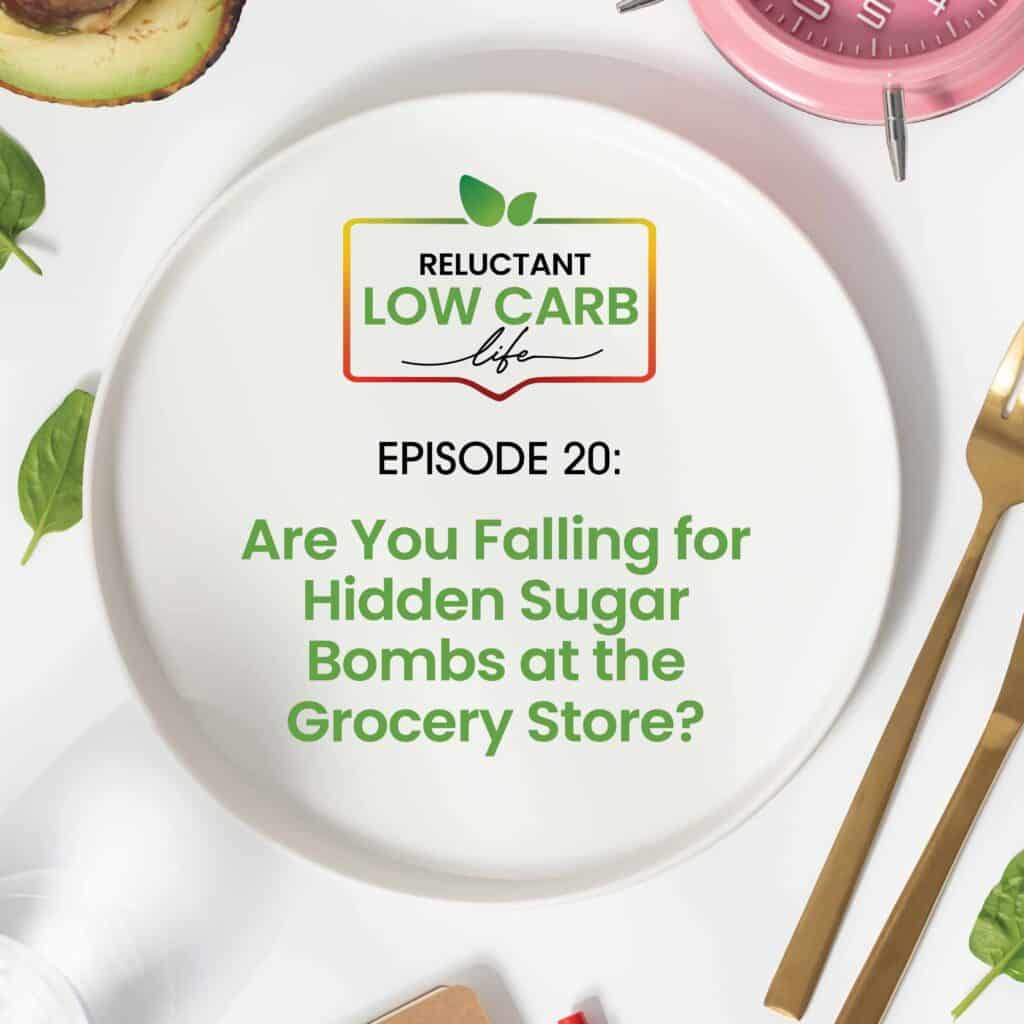
Reluctant Low Carb Life explores all aspects of keto and low-carb lifestyle, fitness, health, wellness, and aging gracefully. At the Reluctant Low Carb Life, we strive to give honest and accurate information to people trying to live the low-carb and keto lifestyle while improving their fitness and health.
We have a free monthly newsletter that is filled with information and helps you remain updated. Subscribe to the Reluctant Low Carb Life newsletter by clicking here.
Listen to our weekly podcast, Reluctant Low Carb Life, on all the major podcast platforms by clicking here.
Follow us on Instagram and Facebook by clicking here.
Related Question
Healthy Living, Healthy Mind: 100 Inspiring Quotes For Your Health And Living
This blog post gives you 100 great quotes about health and living. These quotes come from famous people all around the world and throughout history. They remind us how important it is to take care of ourselves. So, whether you’re just starting your health journey or need a little extra push, we hope these words inspire you to keep going.
You can read more about Healthy Living, Healthy Mind: 100 Inspiring Quotes For Your Health And Living by clicking here.
What Are The Fattest Countries In The World?
The United States is the most obese country in the world for the total number of obese people in one country and is also in the top 20 for the highest percentage of obesity by population. If you compare the population percentages for the most obese, the Cook Islands gets first place. Even if we compare the United States’ obesity rate to many European countries, it is still very high. This clearly shows that the United States has an obesity problem.
You can read more about What Are The Fattest Countries In The World? by clicking here.
What Is A Good Intermittent Fasting Diet Plan For Vegetarians?
We recommend that vegetarians consider going on a 16/8 hour intermittent fast; this is the same intermittent fasting we recommend for everyone, whether they are a vegetarian or not. The 16/8 intermittent fast means that you fast 16 hours per day and eat during a window of 8 hours per day. We find that most people can stay on this kind of fasting schedule.
You can read more about What Is A Good Intermittent Fasting Diet Plan For Vegetarians? by clicking here.
